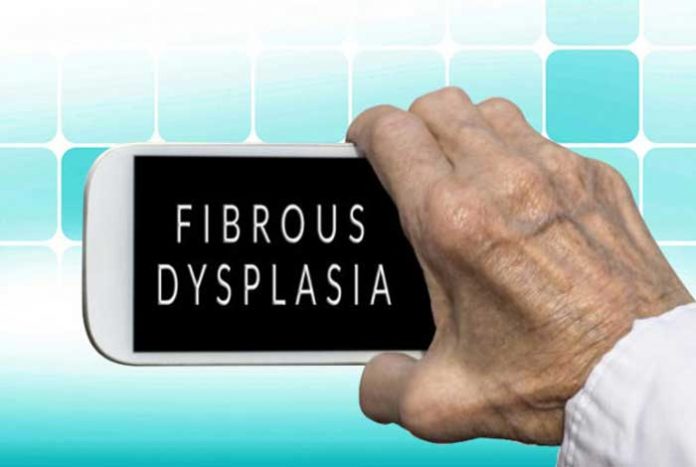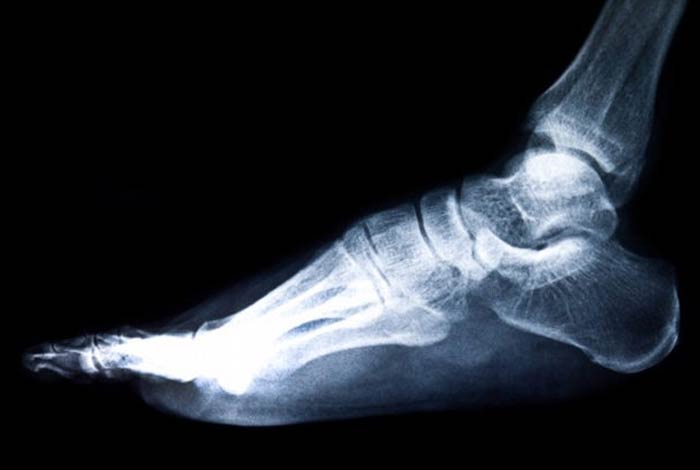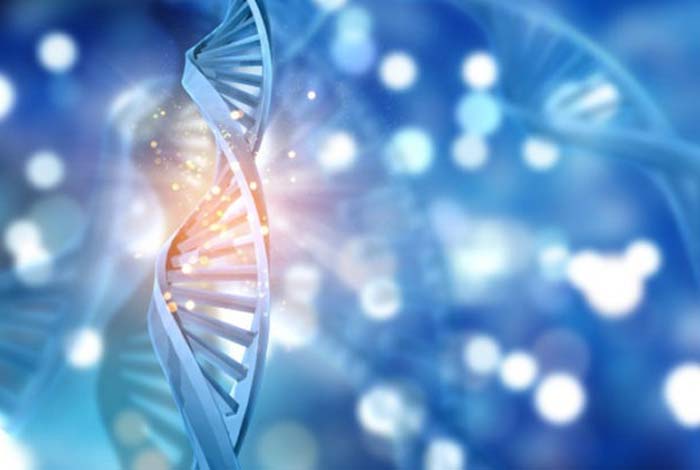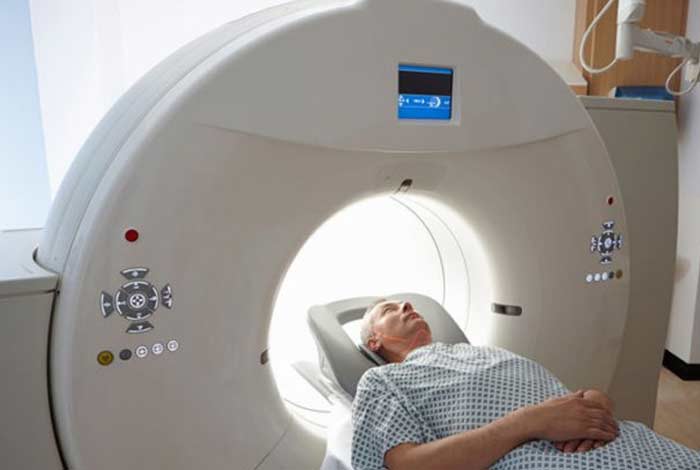
Fibrous Dysplasia (FD) is a disorder of the skeletal system in which the cells that form bones do not mature and produce more of fibrous tissue. Thus, healthy bones get replaced with fibrous tissue. This can lead to pain, particularly when it occurs in the bones of the arms and legs.
It is a rare disorder in which fibrous or scar-like tissue develops in place of normal bones. This can lead to weakening of affected bones, and cause deformation or fracture. In majority of the cases, fibrous dysplasia occurs at one site in a particular bone. However, it can also occur at multiple sites in different bones.
Fibrous dysplasia is a condition, which affects part or combination of axillary, craniofacial and appendicular skeleton. Thus, all in all, severity depends on the extent to which the skeleton system is affected and the location. It can have simpler consequences like bone lesions to more severe consequences like hearing loss, vision problems and mobility.
By the age of 10 years, considerable bone lesions are formed. After the age of 15 years, no new lesions are formed. Children, who have fibrous dysplasia in their appendicular skeletal system show limp, pain and fractures. In craniofacial skeletal system, fibrous dysplasia may present itself as lump or asymmetry in the facial region. Expansion of these lesions may lead to deformity of the facial region. It commonly involves the spine and can even lead to scoliosis, which may be severe in some cases. A common complication of fibrous dysplasia is bone pain. It starts in adolescence and progresses through adulthood.
Abnormal growth of bones, as well as swelling in bones, occurs in this condition. The affected bone becomes enlarged and brittle. The most commonly affected areas are skull and face, thigh, ribs, upper arm and pelvis. Males and females are equally affected by FD.
It should not be confused with cancer nor should it be taken as increasing a person’s susceptibility to cancer. Hormonal imbalance and changes in skin color can also be the signs of FD.
As already mentioned, severe cases of FD can cause bone deformity or fracture. Weakened area of the bone may start to bend and there is a greater likelihood of fracture. If leg and pelvic bones are deformed, arthritis may result in the joints of these bones.
Types and Symptoms of Fibrous Dysplasia
Types of Fibrous Dysplasia:
The main types of fibrous dysplasia are discussed below:
- Monostotic Fibrous Dysplasia: In this type, only one bone is affected. It is responsible for nearly 70% of the cases of FD and affects people in the age range of 10-30 years. Monostotic FD occurs most frequently in the rib, which accounts for approximately 28% of the cases, followed by femur or thigh bone (23% cases). Around 10-25% of cases of monostotic FD are present in craniofacial bones.
- Polyostotic Fibrous Dysplasia: Two or more bones are affected in this type of FD. It affects a number of bones, mostly the long bones. About 20-30% of the cases are of this type of fibrous dysplasia. Nearly 66% of the patients show its symptoms before the age of 10 years.
- McCune-Albright Syndrome: Fibrous dysplasia is also related to hormone disturbances and change in skin color. Around 1% of cases have this type of fibrous dysplasia. This FD involves pelvis, shoulder, leg and thigh bones, ribs and facial bones.

Symptoms of FD:
Fibrous Dysplasia is not very symptomatic. If the condition is mild, there will be no to very few symptoms. More severe cases of FD may cause:
- Pain in the bone; mild to moderate intensity
- Swelling
- Deformity of the bone
- Leg bones curvature
- Arm and leg bone fractures
- Changes in shape of the bone
- Difference in limb length
- Unable to walk
- Uneven growth of the bone
- Scoliosis (sideways curvature of the spine)
Lesions are painless in some cases and are also asymptomatic. However, as the bone tissue grows, the affected area can become painful and weak. Pain starts as ache that worsens with physical activity.

Symptoms of McCune-Albright Syndrome:
- Onset of puberty before the age of 10
- Hyperactive pituitary gland
- Hyperthyroidism
- Darkened spot on the skin

Risk Factors of Fibrous Dysplasia
Fibrous Dysplasia is most commonly diagnosed in children and adolescents in the age range of 3-15 years. One must note that having a risk factor does not imply that one will get the condition.
A risk factor, most certainly, increases the chances of getting the condition as compared to those, who are not at risk. The disease is chronic and stays with a person for life. There is no influence of race, gender, geographical location and environmental factors.

Do I Have Fibrous Dysplasia?
Most people with FD do not present any symptoms, and the disease is only diagnosed when the person has X-ray evaluation done for any other reason. On the other hand, some people, who have a number of bones involved, show pain, bone fractures, bone enlargements and other symptoms. Very rarely, patients develop inability to walk or lose function of nerves in the head that help you in controlling vision and other senses.
There is also a possibility that your symptoms might be due to cherubism, in which there is unusual chubbiness and face swelling.
It should also be noted that FD is not cancer. The term tumor simply refers to abnormal growth of cells, which can remain localized at one place or can become malignant and cancerous. The term ‘lesion’ is generally used while describing FD to distinguish it from cancer. A lesion is a region in an organ or tissue that has an abnormal structure due to injury or disease like ulcer, abscess, wound or tumor. Although, in extremely rare conditions, FD bone can become cancerous.
If you observe bone pain that increases while lifting weights or is interrupting your sleep along with difficulty while walking, unexplained swelling, changes in bone shape and difference in limb length in yourself or your child, there is a possibility of having FD. You should consult your physician as soon as possible to make the correct diagnosis.

Causes and Prevention of Fibrous Dysplasia
Causes of FD:
The exact cause of Fibrous Dysplasia is not known. Some Researchers believe that fibrous dysplasia happens because of a mutation in the gene GNAS1. It is caused by a somatic mutation, which occurs after fertilization. This is not a hereditary condition and does not get inherited from the parents.
The mutation is present only in some cells. This implies effects may be seen only in one part of the body. Researchers do not know why somatic mutations occur, but it causes the GNAS1 gene to become overactive.
Other causes for Fibrous Dysplasia include:
- During pregnancy, abnormal bone activity to form tissues. Lesion stops growing during puberty. However, they may regrow during pregnancy.
- Trauma or infection in the bones.
The gene mutation related with FD occurs after conception, when the fetal development is in the early stages. So, it is not inherited from parents, and can’t be passed onto the children.

Prevention of Fibrous Dysplasia:
There are no definitive preventive measures for Fibrous Dysplasia. However, if the parents notice any symptoms of FD in their child, they must seek consultation of a doctor.

Diagnosis and Tests of FD
It is important to detect the disease as early as possible. This is particularly true for kids. This is because once the skeletal system has matured, it may lead to deformation of the bone and permanent disability.
When the disease is detected early, there are more chances of preventing bone deformity and stop lesions from forming. Generally speaking, there is no cure for the disease. But if it is detected in time, then it may stop further bone damage from happening.
Since bones are the affected part of the body, the most important tool for diagnosing Fibrous Dysplasia is an X-ray. The X-ray test will also let the doctor know how much of the bone is affected and whether the disease has caused any deformity to the bone.
The doctor may also recommend getting complete physical examination and medical history to determine the severity of the disease and presence of symptoms. The following tests may be used to diagnose the condition:
- Imaging Tests: Imaging tests may be recommended by the doctor like CT Scan and magnetic resonance imaging (MRI). These show 3-D images of the bone.
- Blood Tests: These depict the overall health of the person, and whether the levels of blood cells are normal or not.
- Bone Scan: It is a type of nuclear imaging test. A bone scan shows images of multiple fibrous dysplasia lesions. In this, a small radioactive tracer is injected in the blood, which gets absorbed by damaged portions of the bone.
- Biopsy: In this test, a tiny needle is inserted to remove the tissue samples from the bone for microscopic analysis.

Treatment and Care for Fibrous Dysplasia
The following treatment methods are available for Fibrous Dysplasia:
- Medications: There are osteoporosis medicines, known as bisphosphonates that help prevent bone loss by decreasing the activity of bone-dissolving cells. Studies claim that bisphosphonates give strength to the bones affected by FD, and may help in relieving pain.
- Surgery: Surgical treatment of Fibrous Dysplasia includes removing the affected bone area. It is further replaced by a bone graft from another body part. Further, metal plates, screws and rods may be used. Surgical treatment may correct a deformity, repair fractures that don’t heal and prevent fractures from happening. Surgery may relieve nerve pressure, particularly when lesion is present on the skull or face.

OTC Medications and Self-Management Methods for Fibrous Dysplasia
Over-the-Counter (OTC) Medications for Fibrous Dysplasia:
Although there are not OTC medications for Fibrous Dysplasia, one can go for some pain relievers available over the counter. However, consulting a doctor even before taking any pain-relieving medicine is always recommended.
Self-Management Methods for Fibrous Dysplasia:
It can be difficult to live with Fibrous Dysplasia or knowing someone close to you is having this condition may be very disturbing. The following steps can help:
Know All About the Condition: When one learns about the condition, he/she knows what to expect in terms of signs and symptoms, and what steps can be taken. This may put the pressure off the person.
Be a Part of a Support Group: This helps to find solutions to the challenges and to avoid the feeling of being alone. It allows a patient to talk to people who are sailing in the same boat. People with FD can talk to their doctors to find concerned support groups.

Natural Ways to Cure Fibrous Dysplasia
The following measures can be taken to naturally manage this rare bone condition:
- Have a Quality Diet: A diet containing natural products like whole grains, fresh vegetables, juices and salads help strengthen the immunity and cleaning the body.
- Exercise: It releases tension and stored-up tension that affect the normal functioning of the body. These include yoga, tai chi and chi-kung. Exercise helps maintain skeletal health and is recommended for FD patients. Exercise plan must be carefully analyzed by an expert to reduce the risk of fractures.

Health Tip by Expert
Regular exercise helps in strengthening the bones, increasing mobility of joints and maintaining healthy weight. In case of patients with FD exercise must be performed under doctor’s supervision as a person having FD is at an increased risk for having bone fractures.




